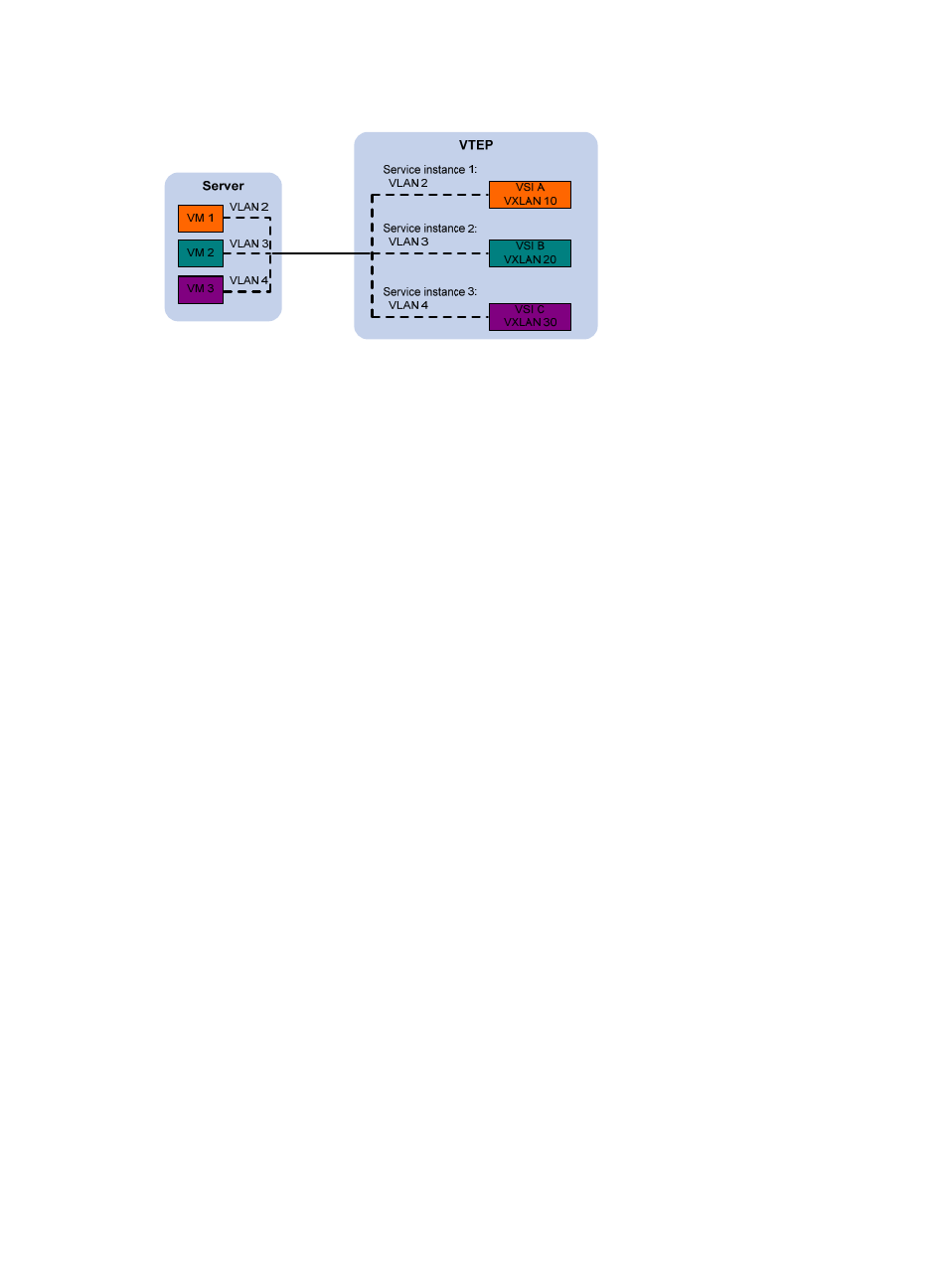Traffic from a remote site to the local site, Mac learning, Traffic forwarding – H3C Technologies H3C S12500-X Series Switches User Manual
Page 11: Figure 3

4
Figure 3 Identifying traffic from the local site
Traffic from a remote site to the local site
When a frame arrives at a VXLAN tunnel, the VTEP uses the VXLAN ID in the frame to identify its VXLAN.
MAC learning
The VTEP performs source MAC learning on the VSI as a Layer 2 switch.
•
For traffic from the local site to the remote site, the VTEP learns the source MAC address before
VXLAN encapsulation.
•
For traffic from the remote site to the local site, the VTEP learns the source MAC address after
removing the VXLAN header.
The VTEP can also use VXLAN IS-IS in the control plane to advertise local MAC reachability information
to remote sites and learn MAC reachability information from remote sites.
A VSI's MAC address table includes the following types of MAC address entries:
•
Local MAC—Dynamic MAC entries learned from the local site. The outgoing interfaces are
site-facing interfaces on which the MAC addresses are learned. VXLAN does not support manual
local MAC entries.
•
Remote MAC—MAC entries learned from a remote site, including static and dynamic MAC entries.
The outgoing interfaces for the MAC addresses are VXLAN tunnel interfaces.
{
Static—Include manually added MAC entries and VXLAN IS-IS advertised MAC entries.
{
Dynamic—MAC entries learned in the data plane from incoming traffic on VXLAN tunnels. The
learned MAC addresses are contained in the inner Ethernet header.
For a remote address, the manual static entry has higher priority than dynamic and advertised
entries. Dynamic and advertised entries have the same priority and overwrite each other.
Traffic forwarding
The VTEP performs Layer 2 or Layer 3 forwarding for VXLANs depending on your configuration.
•
In Layer 3 forwarding mode, the VTEP uses the ARP table to forward traffic for VXLANs.
•
In Layer 2 forwarding mode, the VTEP uses the MAC address table to forward traffic for VXLANs.
Use Layer 3 forwarding mode if you want to use the VTEP as a VXLAN IP gateway.
This section describes the Layer 2 forwarding processes. For information about Layer 3 forwarding, see
"
